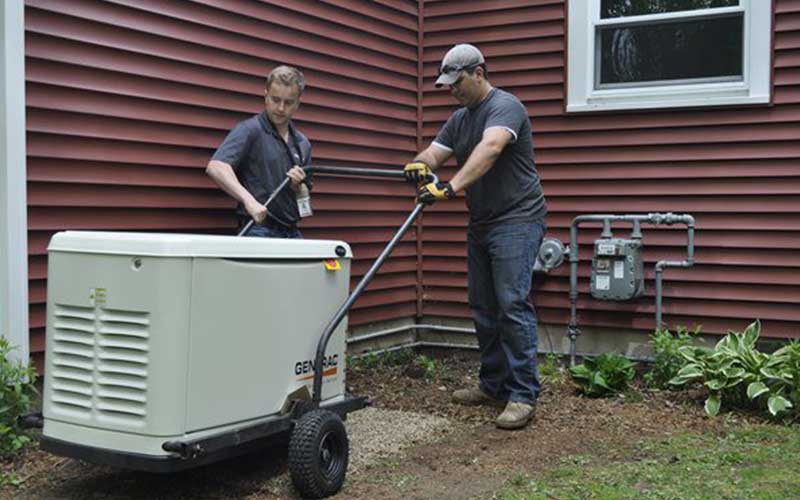
How to Install a Whole House Generator? Comprehensive Guide
How to Install a Whole House Generator? Detailed Guide 2023
When the power goes out, it can cause inconvenience and disruption to our daily routine. A whole house generator is a great investment that ensures uninterrupted power supply during power outages.
However, installing a whole house generator can be a daunting task, especially for those who have no experience in electrical installations.
In this article, we will provide a step-by-step guide on how to install a whole house generator.
How to Install a Whole House Generator? Comprehensive Guide 2023
A whole-house generator is a self-contained power supply that delivers electrical power during a power outage. When the power goes off, it normally connects to the main electrical panel and switches on automatically.
Installing a full house generator is a significant investment, but it provides piece of mind and assures that your home will have electricity when you need it most.
Choosing the Right Generator
The first step in installing a whole house generator is choosing the right one.
There are many different types of generators on the market, and it can be difficult to know which one is right for your home.
It is important to consider the size of your home and your power needs when choosing a generator.
Determining the Generator’s Size
The next step is to determine the size of the generator you need. This is based on the size of your home and your power requirements.
A licensed electrician can help you determine the correct size generator for your home.
Installing the Transfer Switch
The transfer switch is a crucial component of a whole house generator system. It is responsible for switching the power supply from the utility company to the generator automatically.
It is important to have a licensed electrician install the transfer switch to ensure that it is done safely and correctly.
Connecting the Generator to the Transfer Switch
Once the transfer switch is installed, the next step is to connect the generator to the transfer switch.
This involves running a cable from the generator to the transfer switch. It is important to ensure that the cable is the correct size and type for your generator.
Installing the Generator
The next step is to install the generator. The generator should be installed on a level surface that is at least five feet away from any windows or doors.
The generator should also be installed in an area that is easily accessible for maintenance.
Connecting the Fuel Supply
To function, the generator requires fuel. This might be propane or natural gas. You will need to install a propane tank if you pick propane.
If you pick natural gas, a licenced gas fitter will need to attach a gas connection to your generator.

Installing the Exhaust System
The generator produces exhaust gases that need to be vented outside. It is important to install an exhaust system that complies with local building codes.
The exhaust system should be installed at least five feet away from any windows or doors.
Installing the Battery
The battery is responsible for starting the generator. It is important to install a high-quality battery that is compatible with your generator.
Testing the Generator
Once the generator is installed, it is important to test it to ensure that it is working correctly. This involves starting the generator and checking that it is producing power.
It is also important to test the transfer switch to ensure that it is switching power from the utility company to the generator automatically.
Maintenance
Regular maintenance is essential to ensure that your generator continues to function properly. This includes changing the oil, replacing the air filter, checking the spark plugs, and inspecting the battery.
It is recommended to have a licensed electrician perform annual maintenance on your generator.
Safety Precautions
Installing a whole-house generator involves working with electricity and combustible fuels. It is important to take safety precautions to prevent accidents and ensure that the installation is done correctly.
Some safety precautions to take include turning off the main power supply, wearing personal protective equipment, and following local building codes.

Frequently Asked Questions
Q1: How long does it take to install a whole house generator?
The installation time varies depending on the size of the generator and the complexity of the installation. It can take anywhere from a few days to a few weeks.
Q2: Can I install a whole house generator myself?
It is recommended to have a licensed electrician install the generator to ensure that it is done safely and correctly.
Q3: How often does the generator need maintenance?
Regular maintenance is essential to ensure that the generator continues to function properly. It is recommended to have a licensed electrician perform annual maintenance on your generator.
Q4: Can a whole house generator run on propane and natural gas?
Yes, a whole house generator can run on either propane or natural gas.
Q5: How long can a whole house generator run?
The runtime of a whole house generator depends on the size of the generator and the fuel source. It can run for several days if it is connected to a large propane tank or natural gas line.
Conclusion
Installing a whole house generator is a great investment that ensures uninterrupted power supply during power outages. It can be a daunting task, but with the right guidance and knowledge, it can be done safely and correctly.
Remember to always take safety precautions, choose the right generator, and have a licensed electrician install the generator for you.
- No Comments
- May 6, 2023
